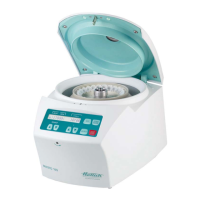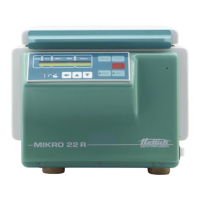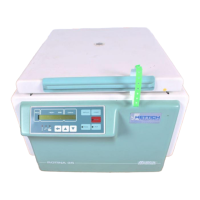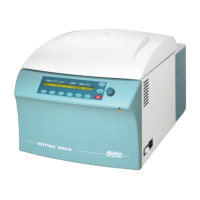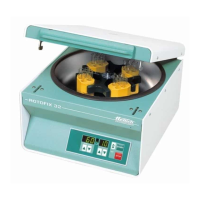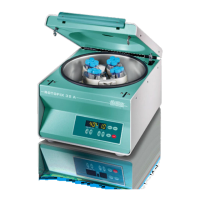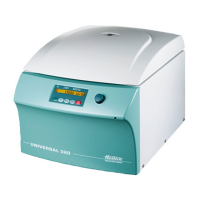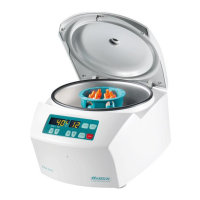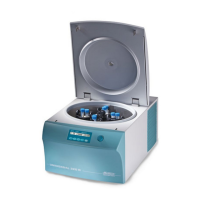EN
33/64
18.2 Rotors and Attachments
18.2.1 Cleaning and care
•
In order to avoid corrosion and changes in materials, the rotors and accessories have to be cleaned regularly
with soap or with a mild cleaning agent and a moist cloth. Cleaning is recommended at least once a week.
Contaminants must be removed immediately.
• Ingredients of suitable detergents:
soap, anionic tensides, non-ionic tensides.
• After using detergents, remove detergent residue by rinsing with water (only outside of the centrifuge) or wipe off
with a damp cloth.
• The rotors and accessories must be dried directly after cleaning.
• Angle rotors, container and hanger made of aluminium are to be lightly greased after drying using acid-free
grease, e.g. vaseline.
• In the case of biosafety systems (for further details of available biosafety systems see chapter
"Anhang/Appendix, Rotoren und Zubehör/Rotors and accessories"), the packing rings must be checked and
cleaned regularly (weekly).The sealing ring is to be replaced immediately upon indication of crack formation,
embrittlement or abrasive wear. In order to prevent the packing ring from twisting when opening and closing the
cover, the packing ring must be lightly rubbed with talcum powder or a rubber care product.
• In order to prevent corrosion as a result of moisture between the rotor and the motor shaft, the rotor should be
disassembled and cleaned at least once a month, and the motor shaft should be lightly greased.
• The rotors and accessories have to be checked monthly for wear and tear and damage due to corrosion.
Rotors and attachments may no longer be utilised upon indication of wear and tear or corrosion.
• Check the firm seating of the rotor on a weekly basis.
18.2.2 Disinfection
•
If infectious material should get on the rotors or accessories, they must be appropriately disinfected.
• Ingredients of suitable disinfectants:
glutaraldehyde, propanol, ethyl hexanol, anionic tensides, corrosion inhibitors.
• After using disinfectants, remove disinfectant residue by rinsing with water (only outside of the centrifuge) or wipe
off with a damp cloth.
• The rotors and accessories must be dried directly after disinfection.
18.2.3 Removal of radioactive contaminants
•
The agent must be specifically labelled as being an agent for the removal of radioactive contaminants.
• Ingredients of suitable agents for removing radioactive contaminants:
anionic tensides, non-ionic tensides, polyhydrated ethanol.
• After removing the radioactive contaminants, remove agent residue by rinsing with water (only outside of the
centrifuge) or wipe off with a damp cloth.
• The rotors and accessories must be dried directly after removing the radioactive contaminants.
18.3 Autoclaving
The following accessory can be autoclaved at 121°C / 250°F (20 min):
• Swing-out rotors
• Angle rotors made of aluminum
• Hanger made of metal
• Lid with biocontainment
• Stands
• Reductions
Otherwise you must ask the manufacturer.
No statement can be made about the degree of sterility.
The lids of the rotors and containers must be removed prior to autoclaving.
Autoclaving accelerates the ageing process of plastics. In addition, autoclaving may discolour plastics.
We recommend that the packing rings of the bio-safety system be replaced after autoclaving.
